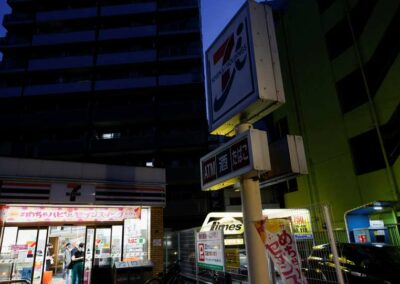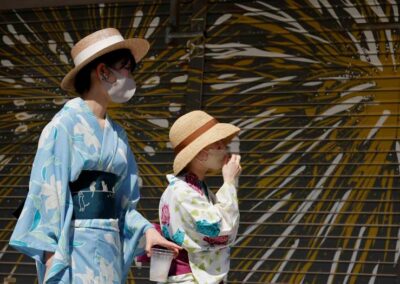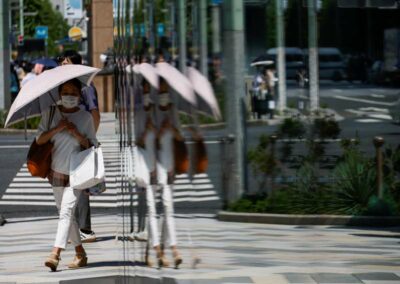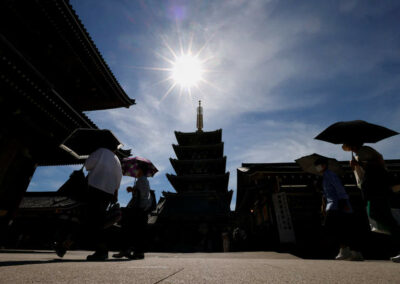TOKYO (Reuters) – Japan’s electricity grid creaked on Thursday under the strain of Tokyo’s hottest June streak since 1875, as the sudden shutdown of a power plant left tens of millions of residents a step closer to blackouts that would bring air conditioners to a halt.
Temperatures of around 40 C were predicted in some areas in greater Tokyo, home to 37 million people, on the sixth day of a heatwave that kicked in after the earliest end to the capital’s rainy season in decades. Maximum highs are not forecast to drop to 30 C before next Tuesday.
With power producers already scrambling to bring nearly 50-year-old turbines out of mothballs, the unexpected closure of a 600 megawatt (MW) plant in northern Japan that sends supplies to Tokyo came with reserve power capacity hovering around 3% – the level below which blackouts can kick in.
Operator Joban Kyodo Thermal Power Company cited unexplained technical issues for the closure, adding no schedule for restart had been decided. Industry ministry officials said they expected the plant to be back on line on Thursday evening.
A mid-morning estimate showed the reserve ratio of power generation capacity for the Tokyo area could fall as low as 3% between 4.30 p.m. and 5 p.m. local time on Thursday, according to national grid monitor OCCTO.
The industry ministry issued a power shortage warning for the fourth consecutive day in areas surrounding Tokyo, urging both households and businesses to conserve electricity as best they can – without stinting on air conditioning where it would endanger the health of the vulnerable, as heatstroke hospitalistions rise.
Some firms, like auto parts maker Yorozu Corp, have said they will scale back manufacturing shifts, while others, like retailer Seven & i Holdings and tech giant Sony, have asked employees to save power by turning off unnecessary lighting or devices among other steps.
Automaker Nissan Motor said it began operating in-house power generators at its Tochigi plant north of Tokyo from Wednesday through Friday this week, while calling on offices and factories to conserve energy where possible.
Japan’s government and utilities had been preparing since spring to deal with tight power supplies during peak summer demand – but not until July kicks in on Friday.
That tightness was triggered by a series of known issues: the suspension of some power plants after March earthquakes in the Fukushima area; a long-term drop in the number of thermal power plants amid a push for decarbonisation; and delays to the restart of nuclear reactors because of stricter regulation following the Fukushima disaster in 2011.
To deal with that, the government and utilities had lined up the rebooting of ageing gas-fired power plants, and changing maintenance schedule for nuclear reactors.
Japan’s biggest power generator JERA is restarting a 45-year-old gas-fired unit in Anegasaki, near Tokyo, on Thursday, followed by a 44-year-old unit at Chita in central Japan on Friday in a bid to provide extra electricity to make up for any shortfalls.
The signboards of a 7-Eleven store, operated by Seven & i Holdings, are partially switched off to take power-saving measures as Japanese government issues warning over possible power crunch due to heatwave in Tokyo, Japan June 29, 2022. REUTERS/Issei Kato
Women wearing summer kimonos and straw hats walk on the street as Japanese government issues warning over possible power crunch due to heatwave at Asakusa district in Tokyo, Japan June 29, 2022. REUTERS/Issei Kato
A woman holding an umbrella is reflected on a window while walking along a street, as the Japanese government issues a warning over a possible power crunch due to a heatwave in Tokyo, Japan June 28, 2022. REUTERS/Issei Kato
















0 Comments